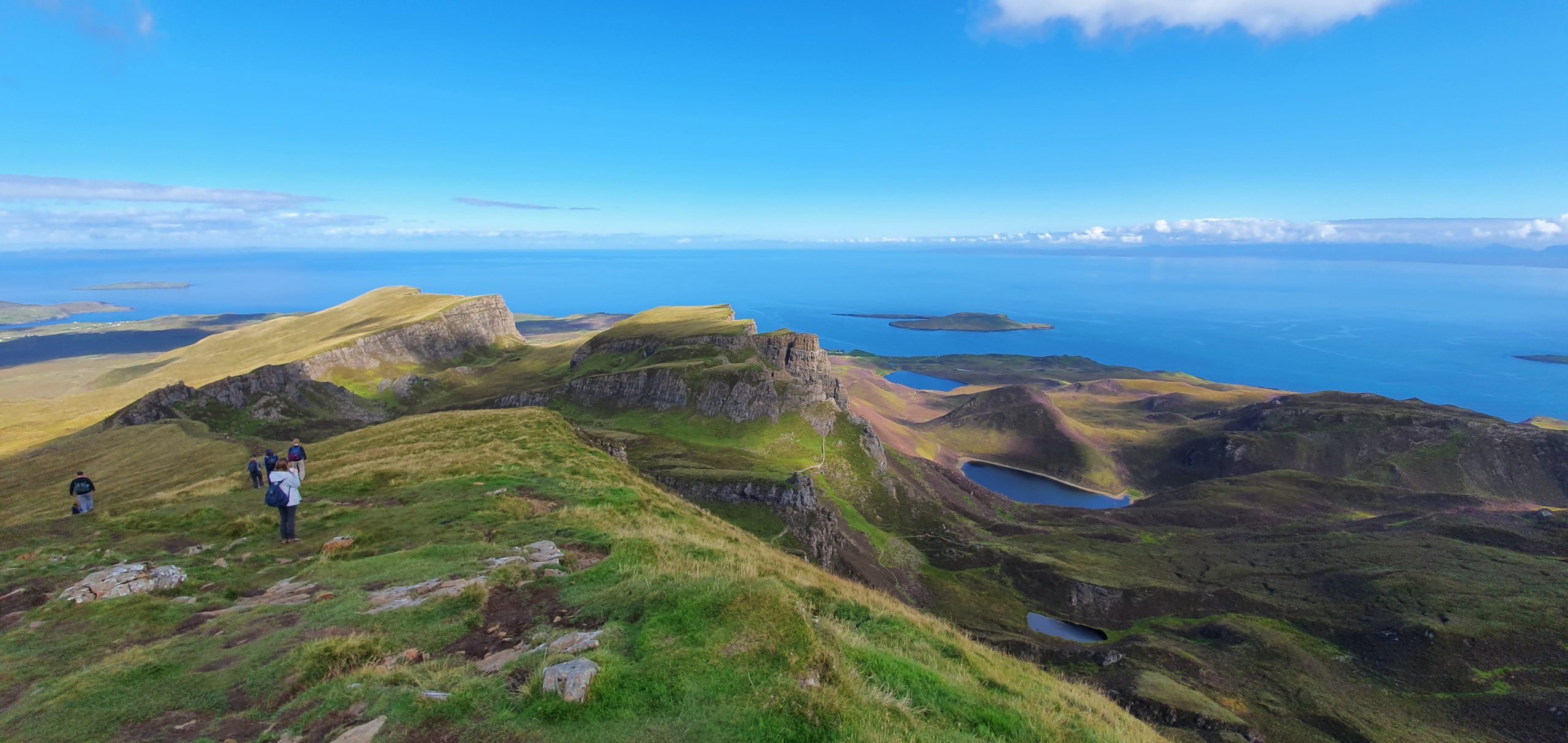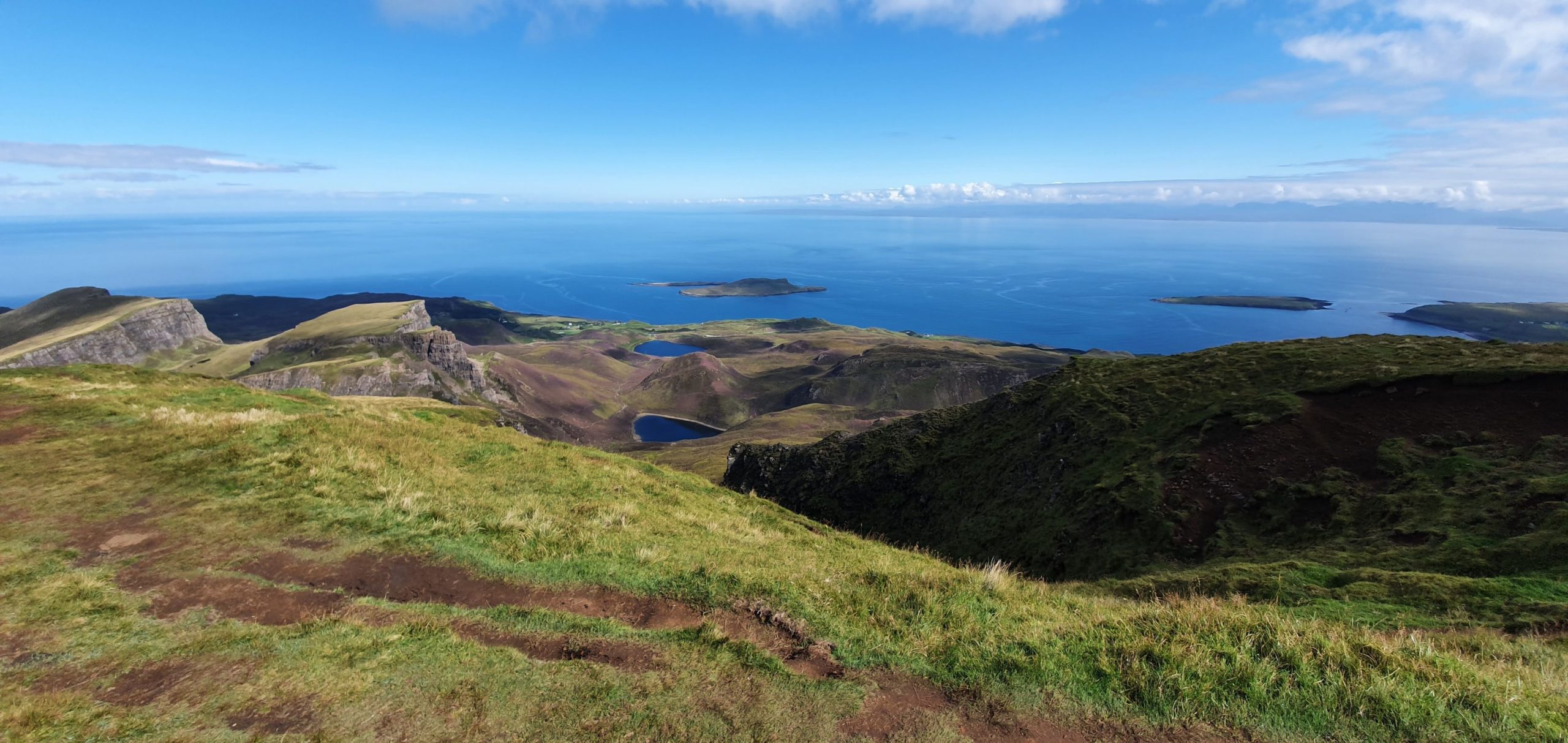Greeny-brown is not usually a sexy colour. It’s the colour of fallen leaves that have turned to mulch, or the colour of rotting apples, or the colour of the mess in a baby’s nappy. Yet, there’s something about a Scottish landscape that turns greeny-brown into something downright magical.
In Scotland, greeny-brown is the colour of grassy hillocks that roll away to the sea, or a rusty hull of an old ship stranded in a picturesque harbour, or seaweed strewn on an enchanting white beach. And, of course, in Scotland, greeny-brown is the colour of peat – the wonder muck that helps to turn water into whisky. Even soil in Scotland is magic.
It’s the same oddly romantic greeny-brown that dives down over the craggy mountainside in front of me now, every so often punctuated by a thin ribbon of grey tarmac or a silvery disc of water, or a dusting of purple heather. Off in the distance, the blue grey of Loch Torridon, stretching as far as Red Point and Gairloch on the eastern shore of mainland Scotland, rises up to meet the billowing Gainsboro grey clouds overhead.
We stop to ponder for a moment; those clouds look rather ominous and we’re still on the way up the mountain instead of nearly done with our three-hour walk, but we trust our weather forecast apps, throw caution to the howling wind and start off on the climb once more. Indeed, there’s something about a little cloudiness that adds to the drama of the vista – and simply knowing that out there, somewhere, whisky is being distilled is inspiration enough for me.
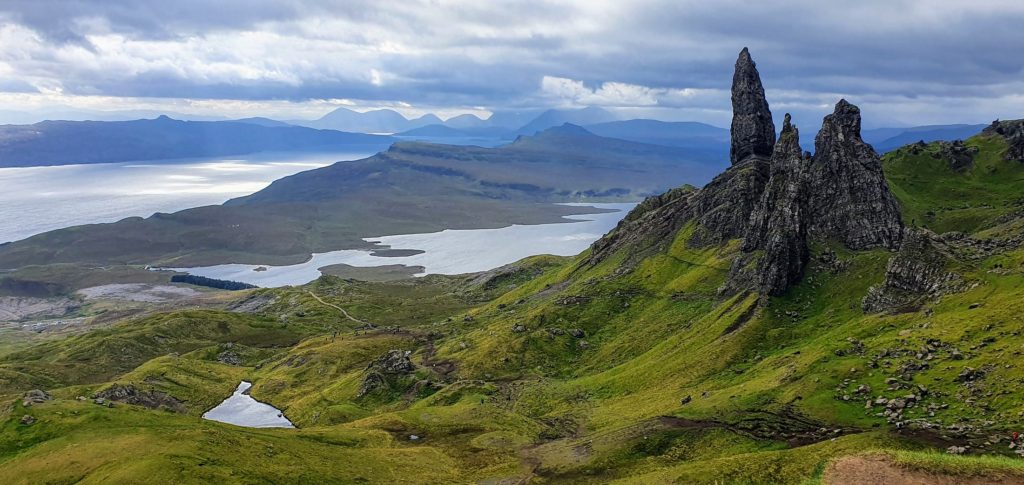
When the weather behaves itself, England and the rest of the UK truly are the ‘green and pleasant land’ all the Christian singers claim it is. Here, it’s mid-September and I’m perfectly warm enough in T-shirt and trousers; in fact, it’s easily ‘shorts weather’ but I was warned to wear trousers to protect myself from the dreaded midges. Due to the wind, even they have failed to gatecrash our party.
One ‘creature’ that certainly makes his presence felt at this time, however, is the Old Man of Storr – fortunately not a senile local but an increasingly famous rock formation whose image has graced just about every online travel publication since July. The trident-like rockform juts up out of the ground, like three stony fingers grasping for freedom from the underworld.
My initial reaction is that, from a distance, the ‘Old Man’ would look a little like Cambodia’s famous Angkor Wat – but then I realise that, as a Brit, my thinking is probably backwards and the Cambodian site should remind me of the UK, not the other way around.
That’s been the trouble with travel until recently; it’s become a global whistle-stop tour of bucket list destinations and a mentality of ‘Got a photo of that; on to the next place’. This trip – to Skye, in the Inner Hebrides and Fort William on the mainland – was intended to help us re-realise the beauty of our own fair shores, and was the latest in a series of trips around the UK over the last year that included visits to Lincolnshire, Anglesey and Dorset.
Last September, the Bradt team travelled to Exmoor in England’s southwest. I’m a little ashamed to say that, despite many holidays as a child in Cornwall and Somerset, I’d forgotten just how beautiful that part of the world is. From the patio of the imperious Bossington Hall, the view of hillside rolling away to the heavenly Porlock Bay is about as wonderful as any you’ll see. And it’s only four hours from London; positively ‘doorstep’ material.
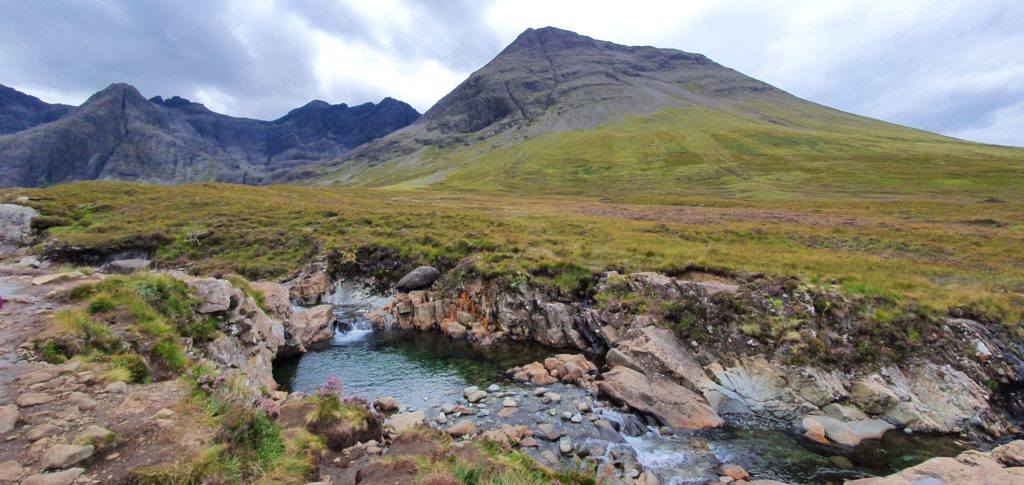
Even outdoor activities in the UK can go a long way to replacing favourite pastimes usually reserved for exotic destinations – especially useful at a time of a global lockdown. I scoffed when learning of a company offering ‘safaris’ on Exmoor – “I wonder if we’ll see a lesser-spotted Somerset hippo…?!” – but, once we were out in the jeep, thundering across wild moorland, taking out our binoculars to spot deer (admittedly not lions, but still enthralling), it felt almost like the real thing. Who needs Kenya…
Indeed, who needs the Caribbean either. The white coral beach, at Claigan on the western edge of the Isle of Skye, could pass for Barbados. Admittedly the beach is composed of coral, not sand, but the panoramic view across Loch Dunvegan and beyond to North Uist on the Outer Hebrides, is as lovely as anything I have seen in the Caribbean. I’m sure more determined visitors to Claigan could even build a coral castle if they wanted to.
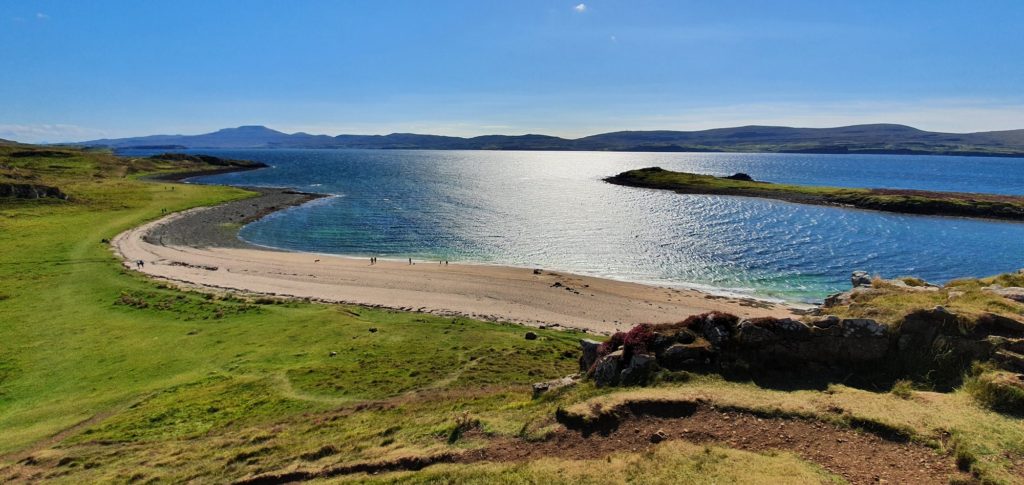
Later that evening, we return to picturesque Portree, the main town on the island and home to the aforementioned rusty ship, for dinner and probably a dram of something golden. Even though, presumably, the boat has been marooned here for some time, it fails to break the romantic imagery.
The boat’s slanted orientation makes it look as though it is leaning languidly against the harbour wall, taking a breather from a busy day of gathering seafood, rather than decaying in its final resting place, a vessel that has honked its last foghorn.
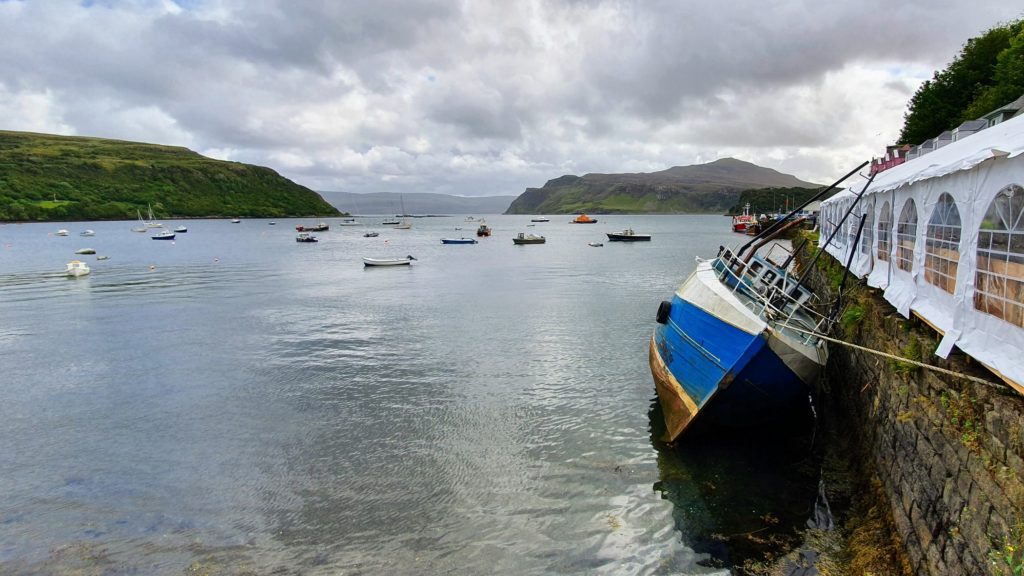
That same greeny-brown on the ship’s hull makes me think back to the walk and the view down from the Old Man of Storr. The magic is stronger than ever. It must be time for a whisky.
Read more about the Isle of Skye
Lear more about the Isle of Skye and the Inner Hebrides in our latest guidebook:
